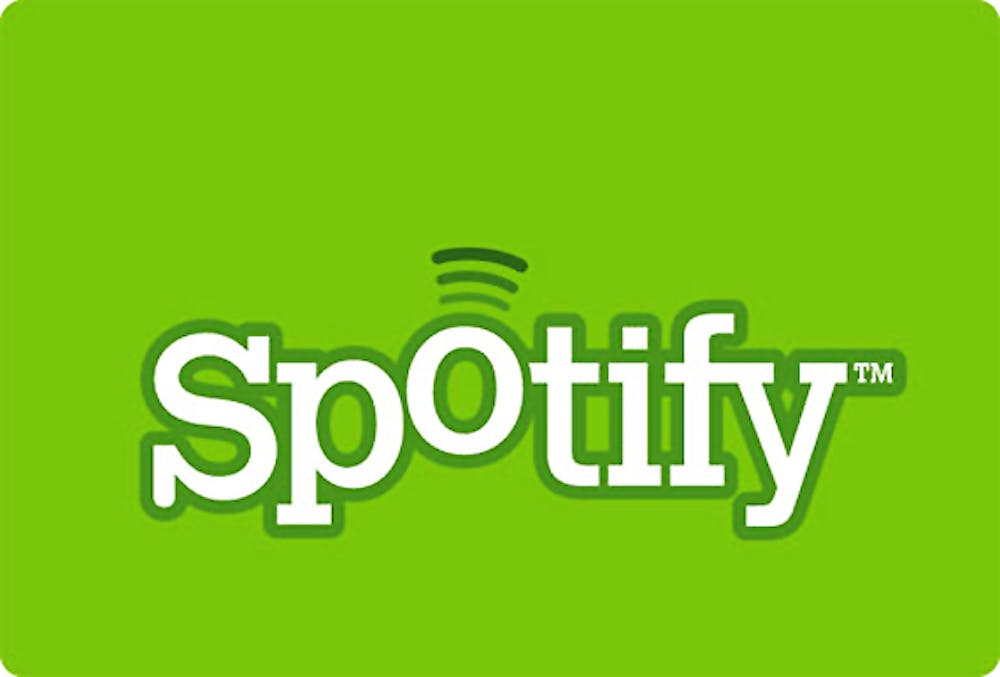College brings students together from all types of backgrounds and geographical areas, and with them, their music collections. It is a place where musical tastes are recognized and developed, as students are exposed to all kinds of new music through their peers. To help you find the music you’ll enjoy listening to for the rest of your life (or at least for the semester), we compiled a guide with some of the best music applications for enhancing the spread of music on campus. Pass it on.
SPOTIFY Price: Free/$5/$10 Best for: Any music consumer who wishes to stream from a library of millions of songs, and for those who enjoy the social aspects of music listening.
Though streaming services have been around for years, none have embraced the “all–you–can–eat” subscription concept as well as Spotify has. Spotify, which was made available in the U.S. this past July, offers free and legal access to a massive library of music (over 17 million tracks and counting). It comes in three forms: Free (you can listen to a limited number of hours of music per month at 160kbps, with advertisements), Unlimited ($5 a month with unlimited listening at 160kbps), and Premium ($10 a month with unlimited listening, 320kbps tracks where available and support for downloads and mobile listening). Perhaps the most striking feature of Spotify is its desktop application. Similar to iTunes, it includes a “What’s New” section with the latest album releases, and a “Top Lists” page with some of the most popular tracks, albums and artists on Spotify. The desktop app also features a library sidebar to the left of the window, a now playing area below, play controls along the bottom and a main pane that displays the contents of your library and playlists. Spotify’s integrated Facebook sidebar allows you to see what your friends have been listening to, while the “Share” button lets you create an instant post for Twitter, Facebook or Windows Messenger. With the ability to import songs stored on your computer and stream from your Spotify library (which includes content from the big four record labels along with a nice selection from independent labels), Spotify is essentially an iTunes replacement. GOOGLE'S MUSIC BETA
Price: Free Best for: The iTunes junkie looking to access their personal music collection from anywhere without the addition of social features for music sharing; Those who simply wish to back up their music in a secondary location.
Google’s Music Beta is a digital locker service that allows you to store your music in Google’s cloud servers and play it back from any web browser, iPhone or Android Smartphone. With 20,000 songs worth of free storage space (for now), the service is not only a practical way to manage your music across multiple devices, but also a tempting economical alternative for backing up your music collection. Its minimalist interface sports a central library pane complete with album artwork thumbnails, a sidebar for playlists (you can import iTunes playlists or create new ones directly on the service) and a set of basic play controls. Music Beta also provides a rotating assortment of “Free Songs,” all of which can be saved to your online library. Aside from an “Instant Mix” button that lets you quickly create a mix of 25 like songs, Music Beta doesn’t offer much in the way of special features. Most notably, the service lacks the kind of sharing or social connectivity options that are present in other music platforms like Turntable.fm or Spotify.
Price: Free Best for: Casual music app users looking to try something fun and different; Social media addicts scheming to become the David Guetta of the Turntable world.
While services like Spotify and Tomahawk have attracted the most serious of hard–core music fans and sharers, Turntable is unique in that the program combines the music–sharing elements of other services with a healthy addition of aspects of social media, chat rooms and even online gaming. Essentially, Turntable is somewhat generic in that users create their own playlists and share them; however, its calling card is users’ creation of DJ “avatars,” little virtual figures that represent users in music sharing spaces where you can DJ yourself, or just “stand” and listen to other users’ playlists. The interface is sleek, and it’s cool to have a virtual representation of the music sharing experience instead of the abstraction of other services. Another interesting element of Turntable is the voting feature, through which listeners in a given room — listening to the same DJs together — can vote on how “awesome” or how “lame” a certain DJ’s set is. The site itself is colorful and intuitive, perfect for more casual fans.
Price: Free Best for: Advanced users who enjoy a more flexible, DIY music application; Spotify users looking for the ultimate music library experience.
In the new, highly competitive music apps game, upstart program Tomahawk is looking to be the game–changer. Its ethos is simple: music is separated across different computers, services, websites, etc. — and that’s bad. Free and open–source, Tomahawk aims to usher in a brave new world of music sharing by making it easier than ever to find music, play it and share it. Much of the site’s features and appeal are based on social media — it offers a cool way to find and share tunes through Twitter, where users can make playlists from their own library or the libraries of their “Tomahawk friends.” Aside from the social media component, Tomahawk offers useful tools for importing music from online sources like YouTube and Last.fm. Tomahawk can also become like iTunes on steroids if you’re a Spotify Premium subscriber, as those millions of songs can become part of your Tomahawk library, which provides for near–infinite listening and sharing opportunities. The learning curve is a little steep, so those less experienced may need to check out the wealth of how–to guides on the web to really learn the program.

